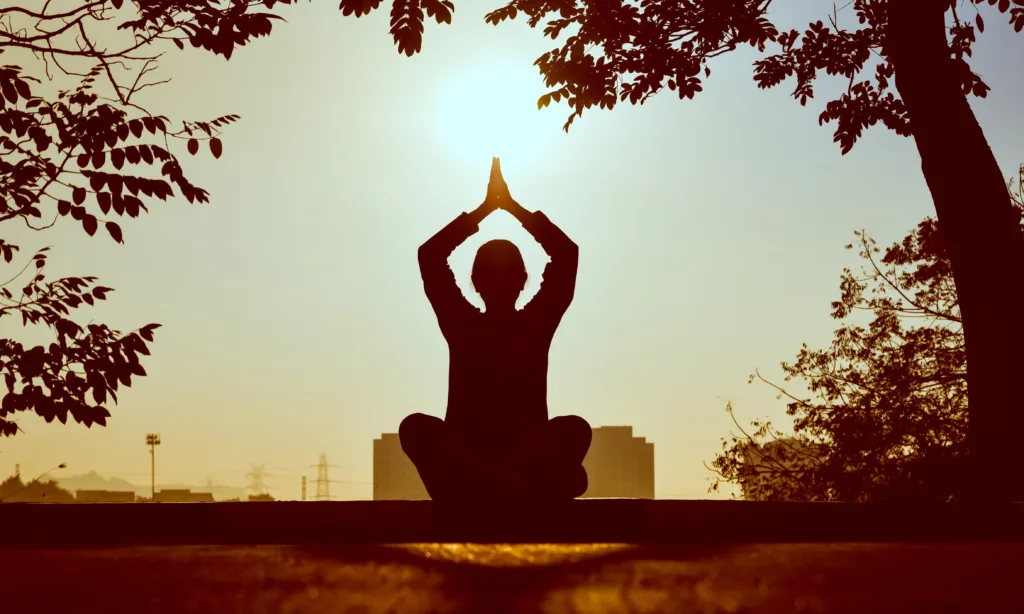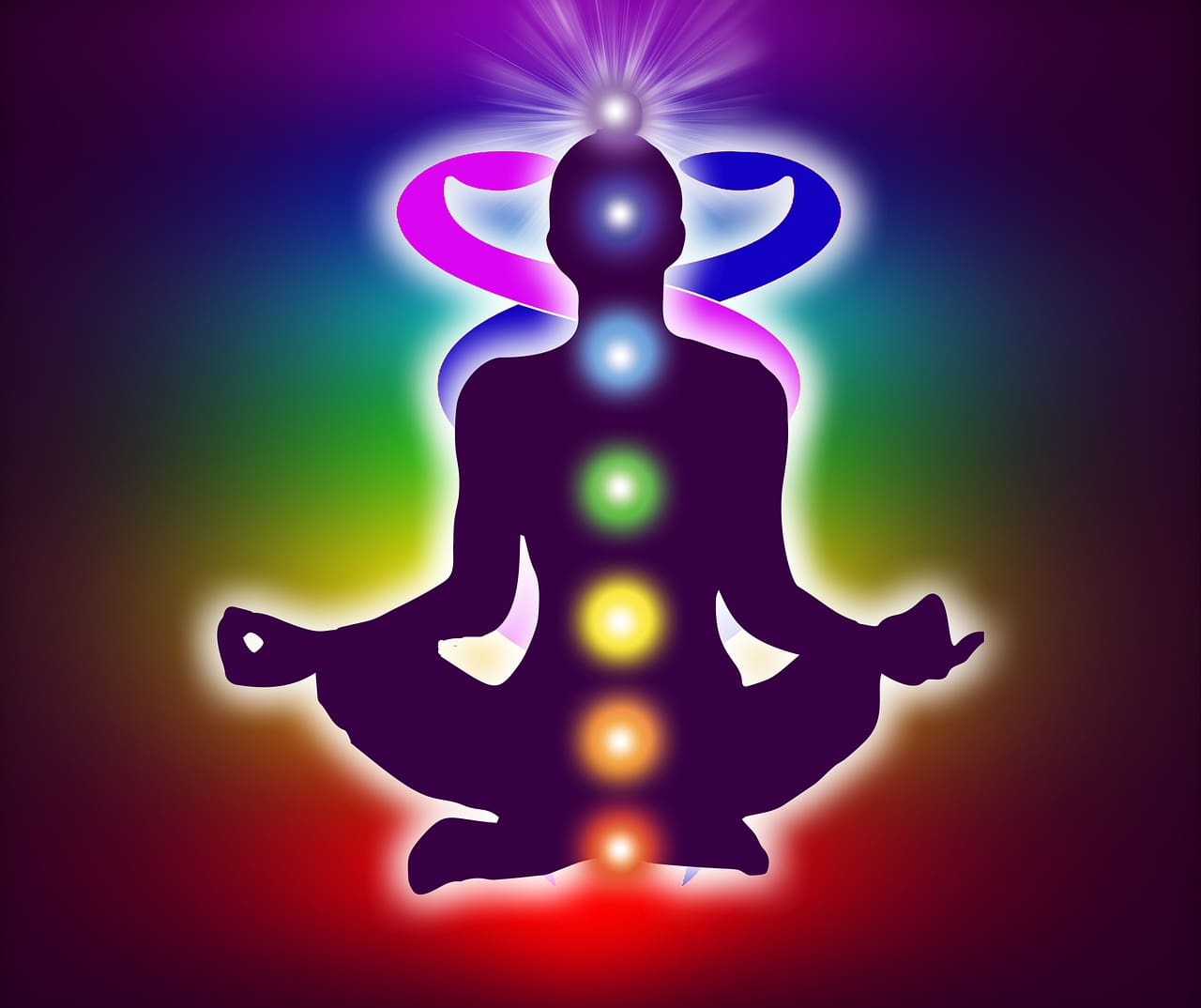Introduction to Kundalini Yoga
Kundalini Yoga, also known as the yoga of awareness, is a dynamic form of yoga that awakens our creative potential. This ancient yoga practice combines physical postures, breathing techniques, meditation, and the chanting of mantras to bring balance to the body, mind, and spirit. The practice of Kundalini Yoga as taught by Yogi Bhajan, a renowned spiritual leader, has gained popularity worldwide due to its transformative power.
History of Kundalini Yoga
The teachings of Kundalini Yoga date back thousands of years and were brought to the West by Yogi Bhajan, also known as Harbhajan Singh Khalsa. Yogi Bhajan founded the Kundalini Research Institute to further the study and practice of this unique style of yoga. This brand of Kundalini Yoga has its roots in the ancient traditions of Raja Yoga and Laya Yoga, but it was Yogi Bhajan who made it accessible to the masses.

Understanding Kundalini Awakening
Kundalini awakening refers to the arousal of the sleeping Kundalini Shakti, a divine energy located at the base of the spine. This energy is often depicted as a coiled serpent, waiting to be awakened. When this energy is activated, it travels up through the chakras, leading to a profound spiritual awakening. Although Kundalini awakening can be a powerful experience, it’s important to approach it with respect and guidance from a qualified yoga teacher.
Kundalini Yoga Practice for Beginners
Starting a Kundalini Yoga practice can be an enriching journey, offering numerous physical, mental, and spiritual benefits. Here’s a step-by-step guide to help you begin:
How to Start a Kundalini Yoga Practice
- Find a Kundalini Yoga Class or Instructor: The first step to starting a Kundalini Yoga practice is to find a yoga class or a yoga instructor who specializes in this type of yoga. You can look for classes at a local yoga center or online.
- Understand the Basics: Kundalini Yoga is a type of yoga that combines physical postures (asanas), breathing techniques (pranayama), meditation, and the chanting of mantras. It’s important to familiarize yourself with these elements before you start.
- Prepare for Your First Class: Wear comfortable, loose-fitting white clothing, which is traditional in Kundalini Yoga. Arrive early to your first class to meet the instructor and discuss any concerns or questions you might have.
Basic Kundalini Yoga Poses (Asanas) and Their Benefits
Kundalini Yoga includes a variety of poses, each with its own benefits. Here are a few basic poses:
- Easy Pose (Sukhasana): This pose helps to calm the mind, strengthen the back, and open the hips.
- Spinal Flex (Seated Cat-Cow): This pose stimulates the nervous system and promotes flexibility in the spine.
- Breath of Fire (Kapalabhati Pranayama): This powerful breathing technique detoxifies the body and increases energy.
The Role of Mantra and Meditation in Kundalini Yoga
Mantras are an integral part of Kundalini Yoga. Chanting mantras helps to focus the mind and elevate the consciousness. Meditation, often accompanied by mantra chanting, is used to clear the mind and deepen awareness.
Importance of the Spine in Kundalini Yoga Practice
In Kundalini Yoga, the spine is considered the central channel for the flow of Kundalini energy. Many Kundalini Yoga exercises focus on the spine to stimulate and balance the chakras, the energy centers located along the spine.
Kundalini Yoga Techniques and Kriyas
Kundalini Yoga, often referred to as the “yoga of awareness,” is a dynamic and transformative yoga style that combines physical postures, breathing techniques, meditation, and the chanting of mantras. The primary aim of Kundalini Yoga is to awaken the Kundalini energy, a dormant spiritual force believed to reside at the base of the spine. When awakened, this energy ascends the spine, activating the chakras and leading to heightened states of consciousness and spiritual enlightenment.
Explanation of Kundalini Yoga Techniques
Kundalini Yoga incorporates a variety of techniques designed to stimulate and balance the body’s energy systems. These techniques include:
Asanas (Physical Postures)
Kundalini Yoga includes a wide range of physical postures, from simple seated positions to more complex standing poses. These asanas are designed to strengthen the body, increase flexibility, and stimulate the flow of energy.
Pranayama (Breathing Techniques)
Breathing techniques are a crucial part of Kundalini Yoga. They help to control the prana, or life force, within the body. Techniques such as the “Breath of Fire” (a rapid, rhythmic, and continuous type of breathing) and “Alternate Nostril Breathing” (inhaling and exhaling alternately through the nostrils) are commonly used in Kundalini Yoga.
Meditation and Mantras
Kundalini Yoga uses meditation and the chanting of mantras to focus the mind and elevate the consciousness. Mantras, often chanted in Sanskrit, serve as a form of sound therapy that vibrates at frequencies believed to have specific effects on the mind and body.
Introduction to Kundalini Kriyas
In Kundalini Yoga, a Kriya is a series of postures, breath, and sound that work together to achieve a specific outcome. Kriyas are multifaceted, and each one is unique, designed to stimulate certain nerves, organs, or systems within the body. They can be simple, such as a single posture with a specific breath, or complex, involving a sequence of multiple postures, breaths, and mantras.
Kriyas are the mainstay of Kundalini Yoga practice. They are designed to raise complete body awareness, stimulate the flow of Kundalini energy, and bring balance to the body and mind. Some Kriyas are specifically designed to target certain areas of the body or aspects of the psyche, while others are more general and holistic in their effects.
How to Incorporate Kriyas into Your Kundalini Yoga Flow
Incorporating Kriyas into your Kundalini Yoga practice involves following a specific sequence of postures, breathwork, and mantras. This sequence is usually guided by a Kundalini Yoga instructor during a class. Here’s a general guide on how to incorporate Kriyas into your practice:
- Start with a Warm-Up: Begin your practice with a series of warm-up exercises to prepare your body and mind. This could include gentle stretching, breathing exercises, or chanting a mantra.
- Choose a Kriya: Select a Kriya that aligns with your goals for the practice. This could be a Kriya for the nervous system, for the chakras, for mental clarity, or any other focus. Follow the sequence of postures, breathwork, and mantras as outlined in the Kriya.
- Close with Meditation: After completing the Kriya, take some time to sit quietly in meditation. This allows the energy generated during the Kriya to integrate and settle within your body and mind.
- Rest in Savasana: End your practice with Savasana, or corpse pose, lying flat on your back and allowing your body to relax deeply. This pose gives your body a chance to absorb the benefits of your practice.
Remember, Kundalini Yoga is a powerful practice, and it’s essential to listen to your body and go at your own pace. With regular practice, you’ll likely find that your ability to perform the Kriyas improves, and you may start to experience the profound benefits that this unique style of yoga has to offer.

The Role of a Kundalini Teacher
A Kundalini Yoga teacher plays a crucial role in guiding students through the practice. They provide instruction on proper posture, breathing techniques, and the correct way to perform Kriyas. They also offer support and guidance during the process of Kundalini awakening. Teacher training programs, such as those offered by the Kundalini Research Institute, equip aspiring teachers with the knowledge and skills they need to guide others on this transformative journey.
Benefits of Kundalini Yoga
Kundalini Yoga, a style of yoga that combines physical postures, breathing techniques, and meditation, offers a multitude of benefits on physical, mental, and spiritual levels.
Physical Benefits
Kundalini Yoga is a comprehensive workout that not only strengthens the body but also promotes flexibility and balance. The physical postures, known as asanas, range from simple stretches to challenging poses. These asanas, often performed in conjunction with specific breathing techniques, work on various body systems. They stimulate the nervous system, improve cardiovascular health, and promote the efficient functioning of the digestive system.
A typical Kundalini Yoga class includes a series of kriyas – a sequence of postures, breath, and sound. These kriyas work synergistically to bring about specific outcomes. For instance, some kriyas are designed to strengthen the immune system, while others may focus on improving spinal health or enhancing lung capacity.
Mental Benefits
The mental benefits of Kundalini Yoga are as profound as the physical ones. The practice of mindfulness and meditation in Kundalini Yoga helps to clear the mind, improve focus, and reduce stress. It is not uncommon for practitioners to experience a sense of calm and clarity after a Kundalini class.
Kundalini Yoga also incorporates the chanting of mantras, which are sound vibrations. Chanting mantras is a powerful tool for transforming the mind. It helps to quiet the chatter of the mind and allows one to experience deeper states of consciousness.
Spiritual Benefits
At its core, Kundalini Yoga is a spiritual practice. The ultimate goal of Kundalini Yoga is the awakening of the Kundalini energy, a dormant energy at the base of the spine. This energy, when awakened, travels up through the chakras, leading to an expanded state of consciousness, often referred to as a Kundalini awakening.
The practice of Kundalini Yoga is a journey of self-discovery and self-transformation. It allows one to connect with their inner self and tap into their creative potential. Many practitioners report experiencing a sense of wholeness and a deeper connection with the universe.
In-Depth Details About Kundalini Yoga
Kundalini Yoga is a rich and complex practice with a vast body of knowledge. For those interested in exploring this practice further, there are numerous resources available. A good starting point would be a book on the subject that provides in-depth details about Kundalini Yoga, its history, techniques, and benefits.
Is Kundalini Yoga Dangerous?
Like any form of yoga, Kundalini Yoga should be approached with respect and understanding. While it is a powerful practice, it is not inherently dangerous when done correctly and under the guidance of a qualified instructor.
Addressing Misconceptions about Kundalini Yoga
There are some misconceptions about Kundalini Yoga, particularly around the awakening of Kundalini energy. While this can be a powerful experience, it is not typically dangerous. The process involves the arousal of the sleeping Kundalini Shakti from its coiled base at the 1st and 2nd chakras before traveling up the spine. This process is usually gradual and managed carefully under the guidance of a knowledgeable teacher.
Safety Precautions for Practicing Kundalini Yoga
As with any yoga practice, it’s important to listen to your body and not push beyond your limits. If you have any health conditions, consult with a healthcare provider before starting a new practice. During the class, follow the guidance of your instructor, take breaks when needed, and stay hydrated.
The Science of Kundalini and Its Effects on the Body
While scientific research on Kundalini Yoga is still in its early stages, preliminary studies suggest that it can have positive effects on physical and mental health. For example, a study published in the Journal of Alternative and Complementary Medicine found that a 12-week Kundalini Yoga program led to improvements in mental health, resilience, and mood among participants.
Conclusion
Kundalini Yoga is a powerful and transformative practice that can lead to physical, mental, and spiritual growth. Whether you’re a seasoned yogi or a beginner, Kundalini Yoga offers a unique and profound journey of self-discovery and personal transformation.
FAQs
Q1: Is Kundalini Yoga suitable for beginners?
A1: Yes, Kundalini Yoga is suitable for beginners. While it is a unique yoga style that combines physical postures, breathing techniques, and meditation, beginners can start with basic exercises and gradually move to more complex practices. It’s always recommended to start under the guidance of a qualified instructor.
Q2: What is the difference between chakras and Kundalini Yoga?
A2: Chakras are energy centers located along the spine, while Kundalini Yoga is a type of yoga designed to awaken the energy (Kundalini Shakti) that resides at the base of the spine and guide it through the chakras. The practice of Kundalini Yoga involves exercises (kriyas) that stimulate and balance the chakras.
Q3: What do you feel when Kundalini awakens?
A3: The awakening of Kundalini can be a profound experience, often described as a feeling of intense energy rising from the base of the spine. Some people also report sensations of heat, visions, emotional release, and heightened consciousness. However, experiences can vary greatly from person to person.
Q4: What are the symptoms of Kundalini awakening?
A4: Symptoms of Kundalini awakening can include physical sensations like heat or energy moving up the spine, emotional shifts, changes in perception, or spontaneous body movements. It’s important to note that these symptoms should be navigated under the guidance of a knowledgeable teacher.
Q5: How hard is it to do Kundalini Yoga?
A5: The difficulty of Kundalini Yoga can vary depending on the specific kriya or exercise being practiced. Some kriyas are quite vigorous and challenging, while others are more gentle and meditative. However, with regular practice, students often find that their ability to perform the exercises improves over time.





















